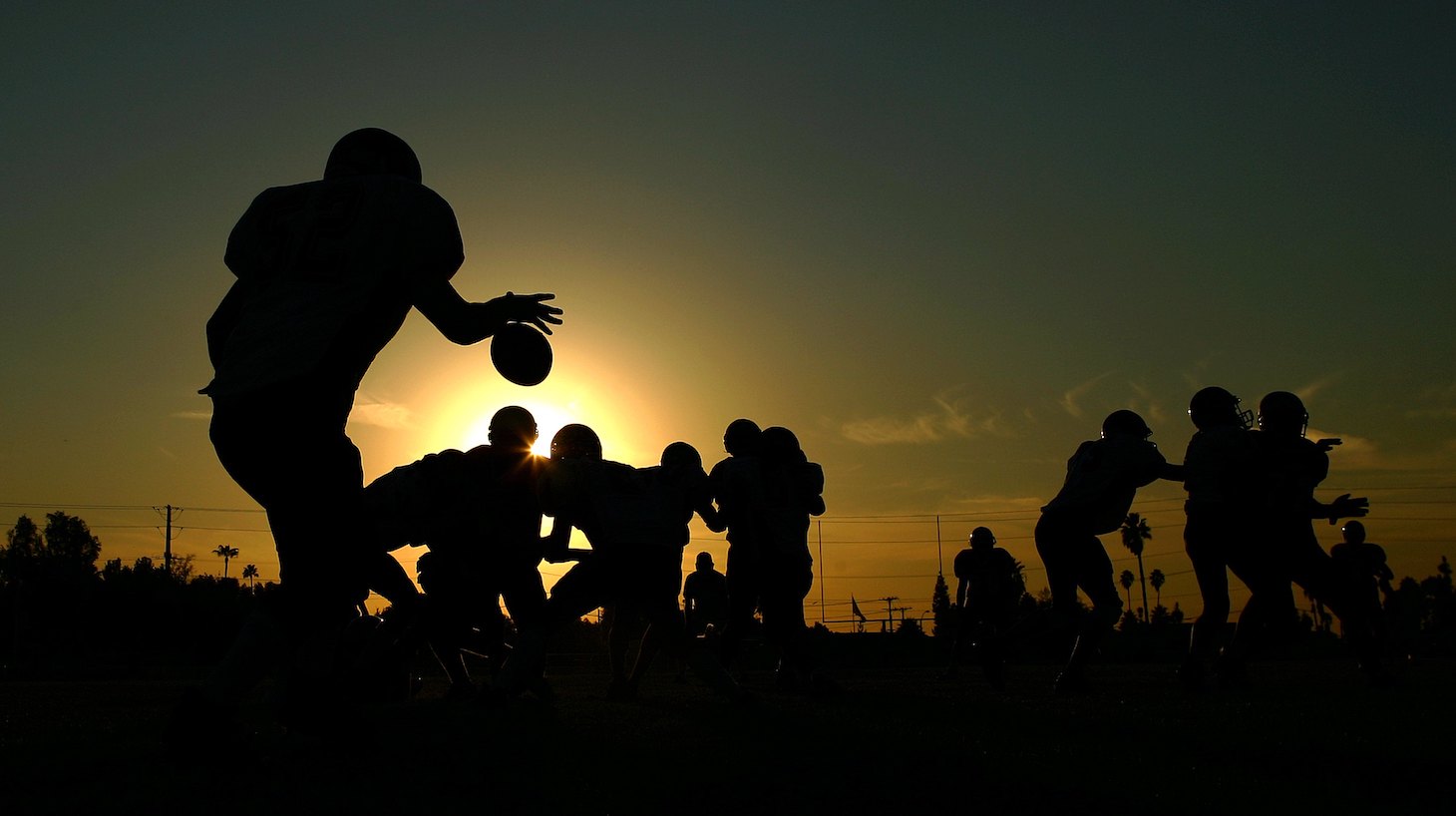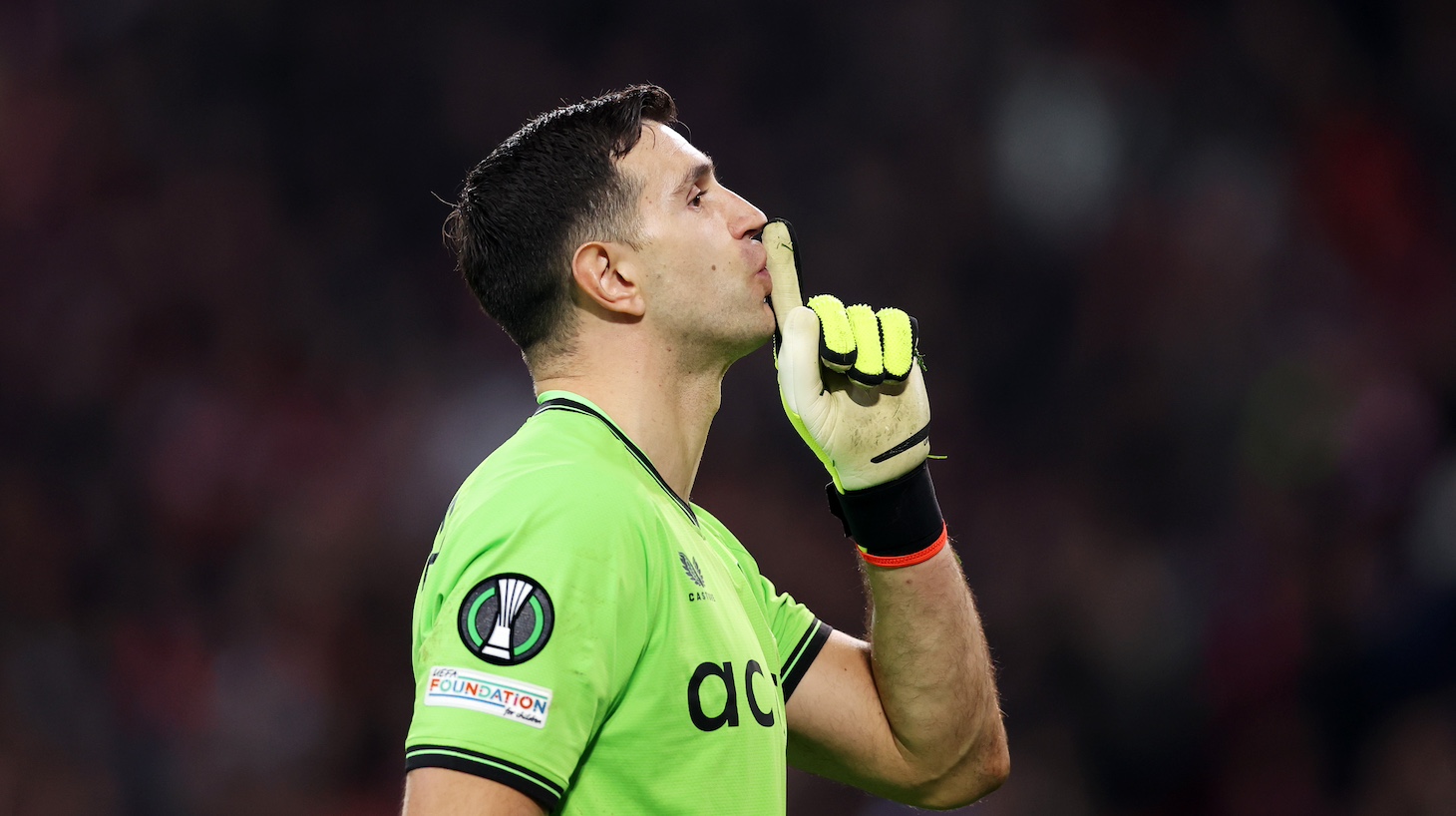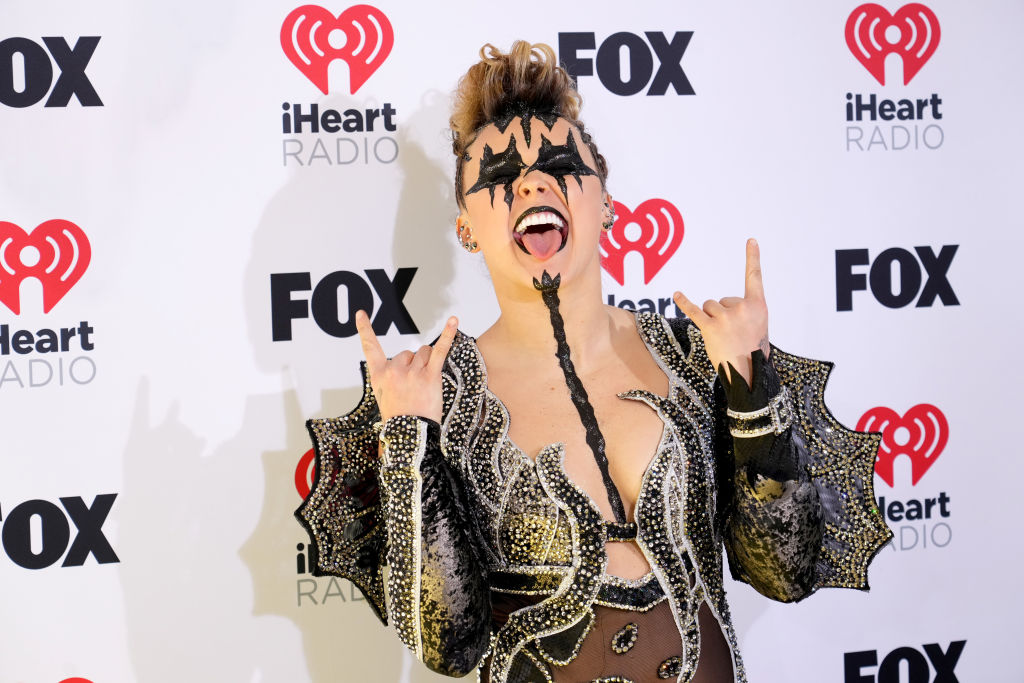Bishop Sycamore’s Capital Crime Was Not Being Good Enough At Football
1:52 PM EDT on August 31, 2021

Turn on any college football or basketball game and the odds are good that, at some point during the three-hour broadcast, you’ll hear the inspiring journey of a boy who worked and worked to leave his circumstances behind. The announcers—former players who probably know better or broadcast journalism grads who probably don’t—will relate imagery of a broken home or a rough school system or a violent neighborhood or some combination of other brutal external factors that nearly derailed this child's entire life before it even got going. Were it not for this young player's miraculous talent, who knows where he might be?
Thankfully, this hypothetical child gets discovered by the very same people who can make astronomical sums of money off of his talent. He is plucked out of his dangerous neighborhood and dropped onto a remarkably expensive campus in Florida or rural North Carolina or colonial New England. They train him there, give him the tutoring he needs to qualify for an NCAA scholarship, and happily field the calls and attention their athletic program will get from the biggest names in college athletics—maybe they’ll even get an NBA or NFL scout in the stands to fire everybody up. Before too long, ESPN will come calling.
This past weekend, the worldwide leader in sports broadcast a football game between two ostensible high school football programs: the William Morris Endeavor–owned private school IMG Academy, where parents pay upward of $80,000 per year to have their kid play alongside the scholarship athletes that scouts are really there to see, against Bishop Sycamore of Columbus, Ohio. In the days since the debacle, Bishop Sycamore has been derided as a fake school. That’s not wrong, exactly, at least insofar as it does not offer students things like "classes." But both are fake schools. One just happens to have the full weight of the sports-entertainment-industrial complex behind it. Legitimacy is often little more than everyone involved agreeing to pretend it’s so.
To be clear, Bishop Sycamore is by all appearances a full-on scam. That scam will be immediately recognizable to anyone who has spent time in recruiting circles or amateur athletics: The school has no classroom and its curriculum is all online; the roster is made up of students who are 19 and 20 years old; every enrolled student is involved with athletics. Known as a “prep year,” the school is essentially a post-graduate program for high school students that don’t academically qualify for an NCAA scholarship. This is not a new model, and the NCAA attempted to crack down on these “diploma mills” in a 2007 investigation, eventually changing academic eligibility requirements to make it harder for students to use online-only homeschool-style curriculums as a replacement for high school credits.
Those aforementioned kids with the talent but not the grades to make it to D-I are usually placed in an unwinnable position. They can go play JuCo ball and hope to stand out in a remarkably crowded scene, or place their trust in someone with a “school” that can help right away. Even by this rubric, Bishop Sycamore appears to be a disgrace. Roy Johnson, the coach (and possible administrator) of Bishop Sycamore, put his players in harm’s way by making them play two football games in three days; reports from former players make it sound more like a pyramid scheme than any legitimate boost. It’s all wildly egregious, but it would be unfortunate if the luridness of this particular program detracted from a great opportunity to interrogate the broader nebulous underworld of D-I feeder systems.
Media reports about the game have at times made it seem as if ESPN and IMG Academy were the victims of fraud, rather than the better-heeled perpetrators and beneficiaries of a system built upon it. The only reason that Bishop Sycamore is receiving national attention now is because their nationally televised game was a blowout, and it was readily apparent that this team had lied about its talent pool. For years, ESPN broadcast high school basketball games played by Findlay Prep, an equally bogus “school” funded by a wealthy car dealer in Nevada that existed from 2006–19. The network and its viewers didn’t register many complaints, however, because during its existence Findlay rostered 11 players who would go on to play in the NBA, as well as a handful of pros in major European leagues. If you are a prep outfit that can provide the big programs with talent and TV networks with inventory, nobody stops to ask for your accreditation status. Bishop Sycamore’s undoing was not its abhorrent practices, ultimately. It was its inability to play football at a high enough level. It gave the game away a little too obviously.
Like Findlay Prep, IMG Academy is little more than a talent-laundering service. William Morris Endeavor, one of the biggest talent agencies in the world, literally owns the private school that churns out the top athletes that it later signs to endorsement deals. It’s a corporatized version of the favor-for-a-favor model pioneered by Sonny Vaccaro, the godfather of modern sports marketing and the creator of high school basketball talent showcases. Vaccaro still claims he never paid players; this is disputed by many, but Vaccaro's at least never been caught. But he inarguably used his connections in the amateur hoops world to set the table for future sports marketing deals. It wasn’t a fluke when players—including but definitely not limited to Kobe Bryant—who attended Vaccaro’s ABCD basketball camp when Vaccaro was working for Adidas ultimately signed with that brand. IMG merely cuts out the middleman. When the diploma mill scandal concluded in 2007, all the NCAA did was guarantee that the next round of fake schools would better know how to look the part. It only takes a little bit of corporate cash to make that happen.
Bishop Sycamore isn’t an anomaly, then. It’s the natural outcome of the amateur athletics ecosystem, a shadow world in which where there’s a ton of money floating around—or at least potential paydays down the road—and no legitimate means to get it to the players. The NCAA went through this, and is only now starting to emerge on the other side; high school kids are the next frontier, and likely have been for some time. It’s no coincidence that IMG Academy added basketball and football programs only in the past 20 years, once broadcasting contracts began to balloon into the equivalent of a medium-sized country’s GDP. The shame of it is that there are good “fake” schools out there, ones that do offer some version of an education and a support system for young athletes; there’s a necessary but very difficult conversation to be had about what really constitutes a “real” school when public schools in poor neighborhoods across the country have been permitted to crumble and regularly fail to meet the demands of the communities they serve. If the fake schools are the ones that are able to help get their kids into better circumstances, then which school has more actual, material utility? The question that sports media and fans should really be asking is what is going to happen to the players from Bishop Sycamore once the program inevitably disbands.
Unfortunately, the lack of interest in that question and lack of regulation in this space effectively guarantee that there will be more Bishop Sycamores—opportunistic programs happy to take advantage of systemic blind spots in order to take advantage of kids who don’t know any better or don’t have any other choice. There’s a reason one former Bishop Sycamore player said that the program’s pitch to him and his mother was, “They told us we’re gonna be the IMG of the Midwest.”
If you liked this blog, please share it! Your referrals help Defector reach new readers, and those new readers always get a few free blogs before encountering our paywall.
Read More:
Stay in touch
Sign up for our free newsletter




